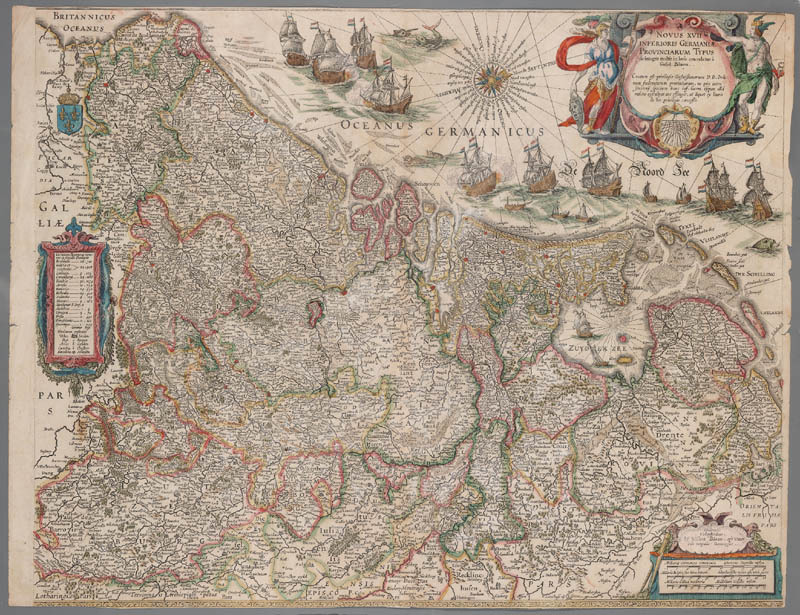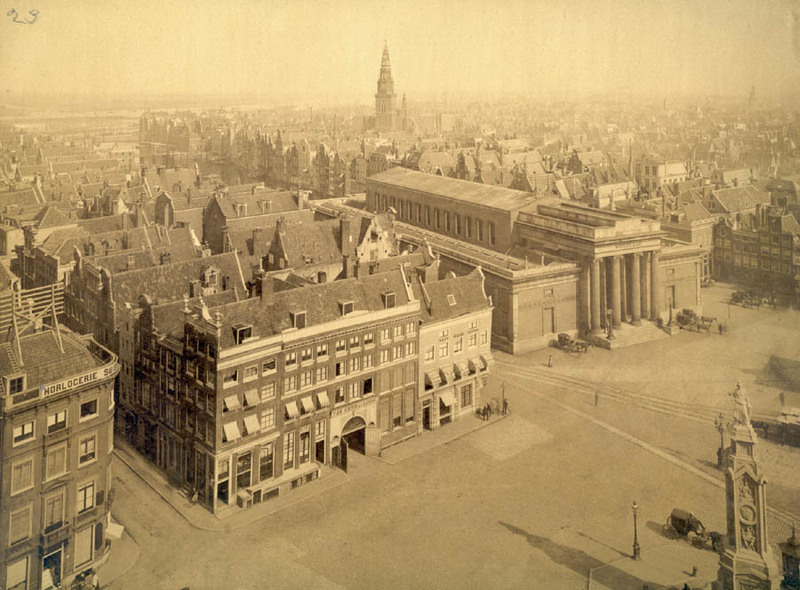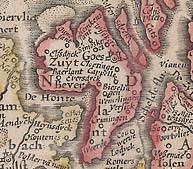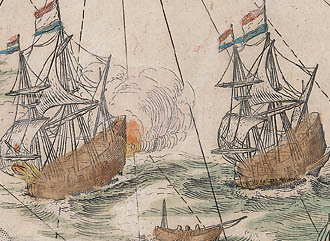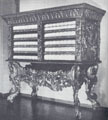Images
The map of the Netherlands that you see here was cut (prior to our care) from the fourth volume of Joan Blaeu's Atlas Maior completed in 1642. The copper plate used to make this impression was that of his father's and dates from 26 March 1608. This is the oldest object held by the Archives of Washington University in St. Louis.
From the Dietrich Gerhard Collection, University Archives, Department of Special Collections, Washington University Libraries. View the finding aid for this collection.
NOVUS XVII INFERIORIS GERMANIAE PROVINCIARUM TYPUS de integro multis in locis emendatus a Guliel. Blaeu. [The Seventeen Provinces of the Netherlands]. Amsterdam: Printed by the house of Blaeu in 1642 for inclusion in the fourth volume of Joan Blaeu's Atlas Maior and printed from the original copper plate made by Willem Blaeu, dated 26 March 1608.
During the seventeenth century the people of the seventeen united provinces of the Netherlands experienced a period of tremendous economic prosperity. As a water-logged society with few land-based natural resources of their own, the Dutch developed into a highly efficient maritime culture that feverishly explored the globe to find goods that were in demand on the continental European market. Along with numerous advances in the fields of science, industry, business, and linguistics, the Dutch also became experts at book and cartographic printing. The example of cartographic printing that you see in this web site was produced by the printing house established by Willem Jansz(oon) Blaeu (1571-1638) in Amsterdam which, from its founding in 1596 and until 1672, housed the largest and most sophisticated presses in Northern Europe.
Blaeu studied under the celebrated Danish astronomer Tycho Brahe (1546-1601) and became a globe and scientific instrument maker. He later expanded his business to include map, chart, and book publishing. After the initial success of his marine atlases in 1608, be began to compile maps for an even more ambitious project -- a massive world atlas entitled, Atlas Novus. He managed to complete only the first two volumes of this work, as he was soon diverted from the project by his appointment as Chief Cartographer to the Dutch East India Company (Verenigde Oostindische Compagnie [VOC]). Upon his death in 1638, the business was passed on to his sons, Joan (1598-1673) and Cornelis (c.1610-1644) who continued their father's work. After Cornelis' death, Joan completed his father's Atlas Novus with the publication of a sixth volume. Soon after, however, Joan began preparing for an even grander atlas, the Atlas Maior, the final volume of which was completed in 1662.
Dr. Joan Jansz(oon) Blaeu's Atlas Maior was to become his magnum opus. With a privileged international audience in mind, Blaeu succeeded in creating the largest, costliest, and most sumptuously decorated atlas ever endeavored. The atlas was comprised of twelve lavish folio volumes that contained 600 hand-colored maps and was further supplemented by 3000 pages of text. Due to their mammoth proportions, the volumes were often housed in specially designed furniture (see image below). Various editions were printed in Dutch, French, Latin, German, and Spanish
Despite its great beauty, Blaeu's Atlas Maior was compiled from many outdated impressions including those of his father's and was, therefore, terribly inaccurate. To his audience, this mattered little. They were simply moved by its sheer size, its evidence of high craftsmanship, and its stunning range of lively colors. To own such an atlas was synonymous with abundant wealth and an esteemed social position.
